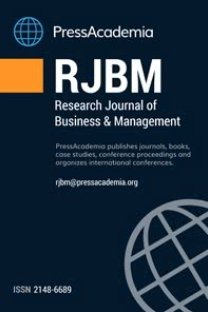EXPLORING COMPETITIVE GAPS TO CREATE A “TURKISH” LOCAL SEARCH ENGINE
Purpose- In today’s world, organizations, brands and even countries compete in an information-rich global market in which the main competitive factor is technology. One of the business models that came with the development of technology is an Internet portal including several features such as search engines. Within this context, the present study aims to explore the gaps that can create competitive advantages for a new local search engine in Turkey that will be established in the global marketplace and to determine how to position a local search engine brand in today’s information market. Methodology- To carry out this study, 20 people who use both Google and Yandex were interviewed in accordance with the Zaltman Metaphor Elicitation Technique (ZMET) steps. 20 collages were prepared for each participant based on the pictures collected by them to represent the brands’ image in their minds; these collages were interpreted by the researchers using the universal metaphors proposed by Professor Zaltman. Findings- The collages and the interviews were discussed in line with the following metaphors: container, resource, control, balance and connection. The research findings help us to understand the images about Google and Yandex embedded in users’ minds. According to the participants, Google has a good and simple design, so the user does not have to spend time learning about the portal to use it. Another important point is international recognition. People trust Internet portals that are internationally accepted as valid. The ability to translate to different languages may help an Internet portal be considered more international and gain a larger market share worldwide. In addition, it is important to provide a lot of resources, for doing so helps searches be more credible. A good and successful Internet portal should focus on privacy. Users want to feel safe, especially on the Internet, so a good protection system would gain users’ trust. Conclusion- The original contribution of this research is that people who use these search engines not only see them as search engines but also perceive them as an intelligent friend, a tempting home or even a universe full of information. According to the research findings, Turkey would be able to create a competitive advantage by investing in a local Internet portal rather than focusing only on search engines.
___
- Anghelcev, G., M.-Y.Chung, S. Sar, &B. R. Duff, (2015). A ZMET Based Analysis of Perceptions of Climate Change among Young South Koreans Implications for Social Marketing Communication. Journal of Social Marketing, 5.1, 56 - 82.
- Benkler, Y. (2006). The Wealth of Networks: How Social Production Transforms Markets and Freedom. USA: Yale University Press.
- Castells, M. (2011). The Rise of The Network Society: The Information Age: Economy, Society, and Culture Volume I. Wiley-Blackwell.
- Catchings-Castello, G. (2000). The ZMET Alternative: A Non-Traditional, Multidsciplinary Technique Lets Marketing Researchers Analyse What Consumer Wants. Marketing Research, 12.2, 7-14.
- Dobni., D. &G. Zinkhan (1990). In Search of Brand Image: A Foundation Analysis. Advances in Consumer Research, 17, 110-119.
- Forester, T. (1985). The Information Technology Revolution. The MIT Press.
- Gartner, Inc. (2017). Retrieved 201711-march from Gartner Inc. web page: http://www.gartner.com/newsroom/id/3568917. Date of Access: 01.03.2017.
- Herzog, H. (1963). Behavioral Science Concepts for Analyzing the Consumer. P. B. Boston, USA: Allyn and Bacon, Inc.
- Levy, S. (1958). Symbols By Which We Buy. In Advancing Marketing Efficiency, edited by Lynn Stockman, 409-416. Chicago: American Marketing Association.
- Malhotra, N. K. (2010). Marketing Research: An Applied Orientation, 6th Edition.
- March, S. T., &F. G. Smith (1995). Design and Natural Science Research on Information Technology. Decision Support Systems. 15.4, 251266.
- Myers, M. D. (1997). QualitativeResearch in Information Systems. MIS Quarterly. June, 241-242.
- Newman, J. (1957). New Insight, New Progress For Marketing. Harvard Business Review, pp. 95-102.
- Turkish Asian Center for Strategic Studies. (n.d.). Retrieved 2017 11-march from http://www.tasam.org/en/Icerik/5342/turkiyenin_stratejik_vizyonu_2023. Access Date: 01.03.2017.
- Webster, F. (2014). Theories of the Information Society. NY, USA: Routledge.
- Varsakelis, N. C. (2001). The Impact of Patent Protection, Economy Openness and National Culture on R&D Investment: A Cross-Country Empirical Investigation. Research Policy. 30.7, 1059-1068.
- Yandex History (2017). Retrieved 2017 11-march from Yandex Webpage: https://yandex.com.tr/company/history/1990.
- Yesilyurt, M. (2014). Geçmişten Günümüze Google’ın Gelişimi. Retrieved from https://netvent.com/gecmisten-gunumuze-googleingelisimi/. Access Date: 01.03.2017.
- Zaltman, G. (2003). How Customers Think Essential Insights into the Mind of the Market. USA: Harvard Business School Press.
- Zaltman, G., & Coulter, R. H. (1995). Seeing the Voice of the Customer: Metaphor-Based Advertising Research. Journal of Advertising Research. 35, 4 (July-August), 35-51.
- Zaltman, G., & Coulter, R. H. (1994). Using the Zaltman Metaphor Elicitation Technique to Understand Brand Images, in NA - , eds. Advances in Consumer Research Volume 21 , pp. 501-507.
- Zaltman, G., & Zaltman, L. (2008). Marketing Metaphoria. USA: Harvard Business School Press.
- Zaltman, G., & Zaltman, L. (2008). Pazarlama Metaforları: Pazarlamanın Yeni Çağında Tüketicinin Zihnini Anlamak, Çev. Ü. Şensoy. İstanbuL: Optimist Yayınları.
- Yayın Aralığı: Yılda 4 Sayı
- Başlangıç: 2014
- Yayıncı: PressAcademia
